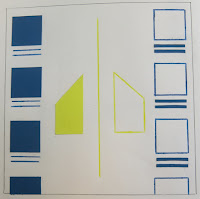- self-motivation and time management
- creating images that focus on composition, found imagery, graphic shapes and handmade textures.
- understanding of a range of different technological and print based, image-making processes.
- I have ambition; a willingness to learn and improve my practice.
my Weaknesses
- confidence in approaching others and presenting my work.
- getting easily stressed over marks and deadlines, instead of finding enjoyment and fulfilment with in my practice.
- a lack of experience in initiating and successfully collaborating with other students and practitioners.
- a limited understanding of the creative industry and professional practice.
my Opportunities
- studying in a specialist art college that offers opportunity for collaboration with a range of different practices and specialisms.
- working everyday in a studio with like-minded students and tutors - opportunity for feedback and to learn from each other.
- competition briefs, art fairs ect.
- the constant opportunity to contact practitioners and companies that have synergy with my practice - ring them, write to them ect.
- access to a range of different facilities and specialist workshop tutors - print, ceramics, photography ect.
- being able to self-promote my work through social media platforms such as instagram, facebook ect.
my Threats
- procrastination and a social life : often I don't take full advantage of the opportunities laid out in front of me because self-doubt or life gets in the way.
- competition from existing practitioners, I need to find my USP : what makes my work different?
- Time is running out, I need to take FULL advantage of my time left as a student on this course because if I don't I may regret it later...

















































